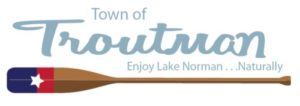
BY DEBBIE PAGE
debbiepage.iredellfreenews@gmail.com
At the suggestion of Troutman Planning Director Lynne Hair, developers of the proposed Barium project presented a recommendation that the town consider adding a UDO amendment to include a new zoning classification and development standards for mixed-use (residential/commercial) projects.
This amendment would apply to all future mixed-use (MU) projects in Troutman and is not specific to the Barium project.
The proposed 2,500-home Prestige development does not clearly fit within the town’s current zoning standards. Hair said the staff recommended adding this amendment to the UDO since the current one does not fully address this type of development.
Both Smith Village and Rocky Creek are examples of approved mixed-use projects that also include residential and commercial components. Because this MU zoning designation was not part of the town’s UDO, the projects were approved with a spilt zoning of mixed residential and highway business.
Because of the significant differences in the two zonings, the hard lines between commercial and residential sections of the development can create issues. An MU district makes these commercial/residential lines more flexible as site plans are created and topographical features present challenges.
Hair said adding an MU zoning classification would be beneficial for the town. These MU projects generally produce higher taxes because of their higher densities and the additional commercial portion.
Recommended amendments include defining what an MU district is, the addition of the MU district to the Development Standards Table to establish minimum lot standards for commercial and residential structures, the addition to the Table of Uses to establish by right and conditional uses, and the addition to the Buffer Standards Table, Tree Save Table, and the Minimum Block Length Table as well as to the sign ordinances to establish signage standards.
Hair defined an MU district as accommodating a variety of housing types along with office, retail, commercial, industrial, and public uses combined into one cohesive community. These pedestrian friendly districts offer residents the chance to live, work, and shop within their community.
She proposed these districts be required to be at least 50 acres and be accessible to a main traffic artery or thoroughfare. At least 30 percent should be dedicated to green space with buffer requirements on all sides and conditional building setbacks. Building heights would be restricted to four stories.
Even though the developer requested that auto, boat sales, heavy equipment, landfills, and outdoor storage be allowed in the proposed MU zoning, Hair and the staff recommended these uses not be included since they “do not lend themselves to the scale and character typically associated with mixed use development.”
The developer also suggested 5 percent of the tract plus each residential lot have one large canopy tree, with 50 percent in front yards and preservation of existing trees preferred. Again, the staff disagreed, instead proposing 10 percent of the tract have large canopy trees.
“Due to the minimum size requirement of 50 acres for mixed-use development and higher density that will be requested with this type of project, staff is of the opinion that the town will be better served if the tree save is a minimum of 10 percent,” said Hair.
Staff also believes digital billboards should be excluded in the sign standards, limiting those to the I-77 corridor only. Illuminated signs would also not be permitted in MU projects.
Maximum block length would be 800 feet, with a minimum of 250 feet.
After making these suggestions, Hair asked for planning board input on several areas. One involved whether the town should require a specific percentage of an MU project be dedicated to commercial uses. She also asked what type of buffers they suggested between residential and commercial areas.
She also asked the board to consider what connectivity standards and walkability requirements that the town might consider adding to the UDO MU standards.
Board member Mark Taylor suggested creating a threshold for open space to ensure buffers and walkability. Hair said some type of community anchor — a community square like Birkdale, a green space, or some community facility — might also be a requirement. She suggested it be a usable centerpiece for the community.
Parking was also considered by the board, with concerns expressed about delineating commercial and residential parking to protect residents. Requiring a signage master plan for the MU project was also suggested.
After delving into these specifics, Hair suggested that the amendment create parameters from which staff can create a checklist to examine these detailed specifics to each development since they can vary greatly in size, from 50 acres up.
This checklist process would allow flexibility but maintain standards and consistency, added Hair. Taylor agreed, saying that approach was still conditional while still putting “common sense into it.”
Planning Board Chair Randy Farmer said the town should specify a specific percentage of MU projects be commercial. Several board members thought an 8 to 10 percent commercial requirement was reasonable. Hair agreed to research the required commercial percentages in MU developments in other municipalities and report back next month.
Farmer also favored undisturbed buffers around the perimeter and larger buffers between residential and commercial areas.
Taylor also questioned fire service, asking if a fire department will be added for this large residential influx. Town Manager Ron Wyatt said the town is in talks with the developer about designating and donating some of the development for an additional fire station.
Hair thanked the board for its input on the MU text amendment, promising to bring a proposed amendment for their consideration that incorporates their suggestions to the next meeting.



